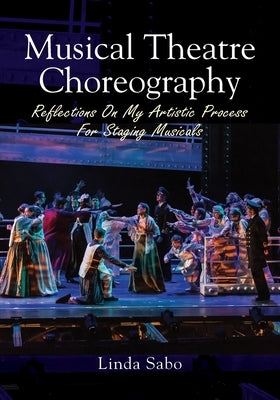Before you leave...
Take 20% off your first order
20% off
Enter the code below at checkout to get 20% off your first order
Discover summer reading lists for all ages & interests!
Find Your Next Read

Musical theatre choreography has indisputably evolved over the years and choreographers develop methods of working and philosophical approaches that should be documented but rarely are. Textual information is limited, and what has been written is generally more practical than theoretical, and is minimal compared to those books written for choreographers of modern and contemporary dance. By pointing out the similarities and dissimilarities between concert dance genres and theatre dance, and by identifying the specialized demands of crafting artistic and script-serving theatre dance and staging, this text differentiates musical theatre choreography as a separate and bona fide art form and suggests that 1) universities recognize it as such by offering training possibilities for future musical theatre choreographers, and 2) established choreographers of musicals begin to write down their own artistic processes to help fill the choreographic toolbox for young choreographers wanting to work in this field.
In 1943, a light switch was flipped with the musical Oklahoma when Rodgers' and Hammerstein's mission to keep the book absolutely central to the making of a musical was established. After that, other musical theatre artists followed suit causing standards to change. Now, no other artistic element in a musical makes a move without first ensuring that it serves the script. By creating original material that is integral to the telling of a story, composers and lyricists came to be thought of as dramatists. Likewise, Oklahoma choreographer Agnes de Mille seamlessly integrated her dances and staging into the action and created character and situation-specific movement that actually helped forward the plot. Because of her groundbreaking advances, choreographers are now also expected to create dances that serve the script and help to tell the playwright's story. The choreographer, like the librettist, composer, and lyricist, is now positioned as dramatist, as well.
In Part 1, the choreographer as dramatist is stressed as the author uses each chapter to reflect upon ways she analyzes librettos and scores to determine the function of each song in a musical and the stories that should be told through dances and staging created for each song. Drawing from her own experiences as a musical theatre director/choreographer, she reflects upon and shares her artistic process, not in a linear way, but anecdotally, to illustrate the kind of thinking that will lead her to effectively tackle the job at hand. At the end of each chapter, assignments are suggested that may be useful to aspiring choreographers and directors of musicals. This text is a valuable resource for teachers designing a course in theatre choreography on either the undergraduate or graduate level, as well as for professional directors and choreographers who want to think more deeply about their own work. Students of choreography will be asked to reflect upon and to work with techniques that are sometimes similar to, but also often oppositional to those learned in modern dance choreography courses. Part Two offers an overview of the scope of literature and representative articles that have been published on both topics, modern dance composition and musical theatre choreography, as it concisely traces the history of modern dance choreographic pedagogy, aligning it with concurrent trends happening within the American musical theatre since the mid-19th century.
Thanks for subscribing!
This email has been registered!
Take 20% off your first order
Enter the code below at checkout to get 20% off your first order